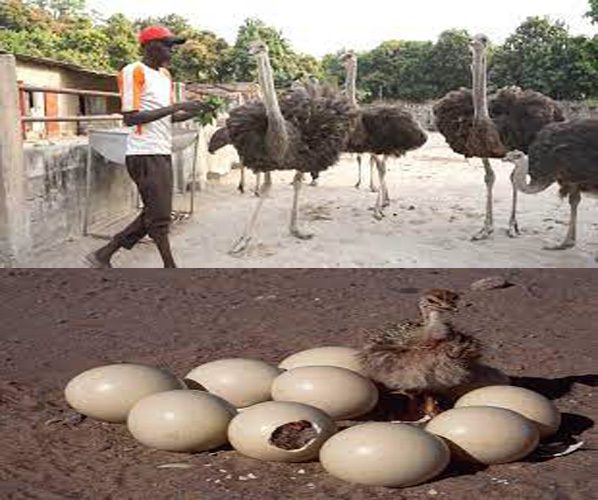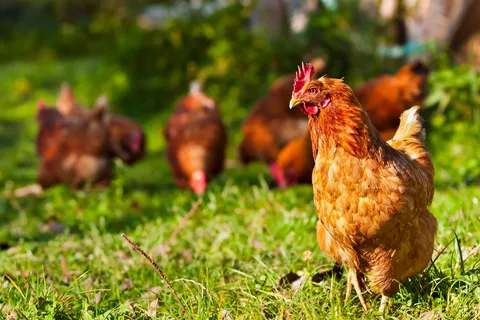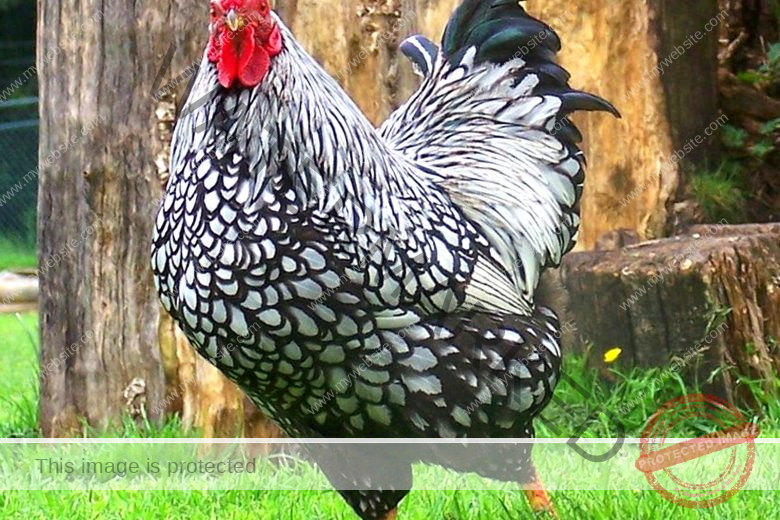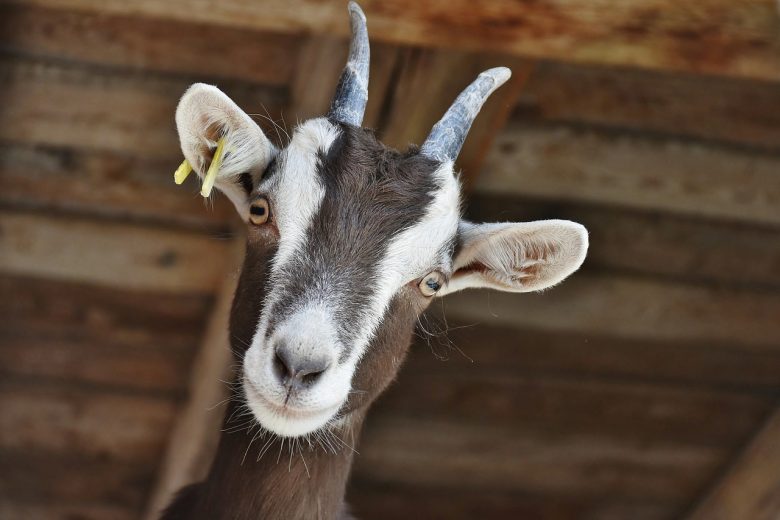Ostrich according to record is one of the world’s largest birds and has been domesticated for its eggs, meat, skins, and other derivatives.
We will be writing extensively about how to start ostrich farming in South Africa shortly, take a seat and follow us as we give you a nitty-gritty guide on how to start an ostrich farming business in South Africa.
To get started with Ostrich farming, you need large acres of farmland, a fund to get started with, adequate training on ostrich farming, good specie of ostrich, and many more we will be writing on shortly.
How To Start Ostrich Farming In South Africa Step By Step Guide
Following are what you need to put in place to start ostrich farming in South Africa;
Step 1: Secure Fund For The Business
The first thing before starting an ostrich farm in South Africa is to get money. You’ll need money to buy everything from food to coops and medicine for your Ostriches.
Read Also: How To Start Pig Farming In South Africa [Step By Step Guide]
The first step in starting an Ostrich farm is to secure money. There are a number of ways to raise money for this project, including personal savings, family members, or a bank loan.
Step 2: Get the right Information To Raise Ostrich
The physical qualities, structure, and other traits of ostriches make them a distinct breed of bird.
It’s possible to raise Ostriches without fear of their death or the possibility of Ostriches damaging your farm employees if you have received the right instruction. Learn about the most frequent diseases and other information you need to know.
To get adequate knowledge about this business, you may need to learn from farmers who have started this before, you may learn from their experiences or read through this guide.
Read Also: How To Start Goat Farming Business In South Africa [Starter Kits]
Step 3: Secure a farmland
You will need at least 3 acres of land to start an ostrich farming business because ostriches are large birds that need a lot of space to grow and thrive in the environment you choose to keep them in.
Step 4: Construct Your Ostrich Pen
A fence or barricade is all that is needed to keep these birds from fleeing.
Build a shelter for them so they have a place to go to sleep and hide if the weather becomes nasty. Consider these considerations before building an ostrich home.
There is no need to use barbed wire as a barrier to keep birds safe. Divide a pen into parts by erecting hedges to make courtship displays more private. To keep the birds happy, keep the sandbox clean.
Read Also: How To Start Fish Farming In South Africa {Beginners Guide PDF}
Step 5: Get the Best Ostrich specie
After constructing your ostrich pen, you can purchase ostriches from a local Ostrich farm. We’ll go through a variety of ostrich species and breeds in the following paragraphs to help you narrow down your options.
Where Do You Buy Better Ostrich Specie?
Following are the areas you can get your Ostrich supply in South Africa.
- Safari Ostrich Farm
- Cape Point Ostrich Farm
- Highgate Ostrich Show Farm
- Cango Ostrich Farm
Step 6: Feeding Your Birds
Feeding and watering your birds correctly is critical to getting the best outcomes and presenting them in their best light.
A lot more water will be required to keep up with the avian consumption. Smaller animals, like ostriches, require less food than their larger counterparts.
What Does Ostrich Eat? ( Ostrich Food)
Ostrich feeds on plants and forages most time. Ostriches eat mostly plant stuff as their primary source of nutrition. In the wild, ostriches eat 60 percent plant material, 15 percent fruit or legumes, 5 percent insects or small-sized animals, and 20 percent grains, salts, and stones.
You can deploy this food formulation to prepare your ostrich food here in South Africa.
Guide To Raise Ostrich Properly In South Africa
Two to three years old is when ostriches become sexually mature, with hens maturing six months before the male counter parts. The number of eggs produced increases year after year.
Ostriches can only reproduce during specific times of the year, depending on the breed.
Unlike the Somali ostrich, the Maasai ostrich has only one breeding season per year. The birds have their own ways of getting together to mate. male counter parts usually fight for hens by hissing and making other noises.
If you’ve ever wondered what it takes to attract female chickens, this is your answer. When a hen is ready to be mated, she spreads her wings, moves her neck in circular motions, and kneels down. The male mounts the hen from behind while she slouches on the ground.
Mating occurs on a daily basis, with the most common times being early in the morning and late at night.
The male counter parts sets up a nest for the hens to lay their eggs in on the ground. It takes up to 90 days for eggs to be deposited on alternating days.
There should be one male to three female (hen) mating pairs for optimal results. The hens’ egg production is halted when the males are removed from the brooding area to ensure proper timing.
How TO Handle the Ostrich Eggs
Ostriches lay their eggs in the nest. In a nest, the hens will deposit their fertilized eggs. The dominating female will be the first to give birth and the first to begin producing eggs.
Depending on the species, a hen can lay anywhere from 15 to 45 eggs in a season.
When it comes to eggs, the yolk of an ostrich egg is the largest single cell of an egg, even though it is smaller than any other egg. which have an average length and width of 15 cm (5.9 in) and a weight of 1.4-2 kg. The shells are glossy and cream in color, with little pits, etched into the surface of the thick shells.
Driving the birds to a safe distance while they are being harvested is a good precautionary step. This is done in order to avoid retaliation from the bird’s female counterpart.
One person should distract the birds while the other retrieves the eggs, preferably with two people participating.
Hand gloves should be used by egg collectors to avoid contamination of the eggs, which could result in embryo death. Eggs that have been soiled should be cleaned using a moist, warm towel.
Formalin and potassium permanganate should be sprayed on the eggs for 30 minutes.
You can keep eggs at 15 degrees Celsius in a refrigerator for up to ten days.
The top of the egg should be marked with a pencil, and then the eggs should be flipped twice a day so that the yolk remains in the center. Place the eggs at room temperature before starting the incubation process.
Incubation Guide For Ostrich Farmers
Incubation equipment is only as good as the facility it is housed in, and this is often the case. When it comes to successful incubation, there are no hard and fast rules that must be followed. These include:
Facilities should be able to maintain a temperature range of 15 to 20 degrees Celsius.
At least 20% of the time, fresh air should be exchanged outside.
The optimum level of humidity is 45 percent.
There should be as few persons entering the facility as feasible to keep traffic and employees to a minimum.
Cleaning and washing floors and walls on a regular basis is essential.
Portable fans or similar devices should be used to help circulate the air in the room.
Facts About Ostrich Birds In South Africa
- To meet the rising global demand for ostrich meat and other things, South Africans began establishing ostrich farms in 1989.
- Although the ostrich cannot fly, its long, muscular legs allow it to sprint at 70 kilometers per hour in a matter of seconds. For up to 30 minutes, it can keep at this pace.
- The huge toe of its foot contains a sharp claw that it uses for defense. The small head and long bare neck serve as additional defenses for the creature.
- While the female ostrich has grayish plumage, the male has black plumage with white plumes on his wings and tail.
- The ostrich can withstand harsh weather conditions and thrive in ASALs just as well as any other species.
- Open forests and range grasses are the most common habitats for these birds. It’s not uncommon for them to avoid dense foliage and plants.
- There are up to 45 eggs in an ostrich and each one weighs between 1.5 and 2 kg.
- At maturity, male ostriches grow to a height of 6-9 feet, while females reach a height of 5.5-6.5 feet.
- Typically, male and female ostriches are differentiated by their colors. Ostrich males are black, whereas ostrich females are tan. Maasai and Somali Ostrich specie predominate in South Africa, and they can be identified by the pink or blue hues on their skin.
Common Ostrich Diseases
Fowlpox:
Several types of avipoxvirus cause this, and mosquitoes are usually the ones who spread it. The virus can be found in chicken eggs that have started to develop, and histopathology can show typical cytoplasmic inclusions. On the bird, it causes small blisters that turn into 5–10 mm brown, crusty spots on the eyelids, the corner of the beak, and other parts of the head.
Newcastle disease:
This is caused by a virus called a paramyxovirus, and it is very common in chickens. Different strains vary in how dangerous they are, so they are put into three groups: lentogenic (mild), mesogenic (moderately dangerous), and velogenic (very dangerous). The number of birds that die can range from a few to more than 30%, and all age groups are at risk. But most of the time, only one flock or camp is affected.
Coronaviral enteritis:
Ostrich chicks have been reported to have died as a result of exposure to this infection. Many enterocytes’ apical cytoplasms included eosinophilic inclusions, and necrotic cells were observed throughout the distal small intestine’s crypts and villi.
Crimean-congo hemorrhagic fever:
This is a human disease, not one that affects ostriches, despite the fact that ostriches have tested positive for the virus. Ticks bites are the only way to spread this disease, which is endemic to the area. Hemorrhagic fever can be lethal in men, causing severe hemorrhaging.
Common Ostrich Breeds In South Africa
Somali Ostrich (S. Camelus molybdophanes):
It’s a Blue Necked, but with fewer and more spaced-out quills. Laid roughly 30 fewer eggs in two seasons, March and August. They have a more compact body.
Maasai Ostrich (S.camelus massaicus):
It’s a Pink Necked, however, this one has more quills. One laying season might yield up to 40 eggs from this breed.
Southern Ostrich (S. Camelus australus):
Black-necked ostrich, as the name suggests. South Africa is the primary habitat for this species.
Black necked Ostrich (S. camelus camelus.):
They are smaller and more common in Europe and South Africa.
Arabian Ostrich (S.camelus syriacus)
How Do You Sell Ostrich From Your Farming in South Africa
The rising demand for ostrich meat has resulted in a rise in prices. Among the countries where the birds have been sold are the United Arab Emirates, South Africa, South Africa, and China.
Ostrich eggs sell for roughly Sh3,500 each because of their scarcity and size; each one weighs 1.3 kg. A one-month-old chick can be purchased for between #40,000 and #60,000.
Advantages of Ostrich Farming in South Africa
- The global demand for ostrich meat and its products has grown, resulting in a steady source of income for producers.
- There are fewer fat and calorie and cholesterol calories in ostrich meat.
- You can use Ostrich oil to cure asthma and other chest diseases because it is created from the fat of ostrich.
- Using the feathers of a bird, you may produce apparel, home decor, and even cushions, duvets, and chairs.
- Investing in ostriches pays well for farmers in the form of a better and quicker return.
- A way to bring in money is through the tourism industry.
Disadvantages of Ostrich Farming In South Africa
When harvesting Ostrich eggs, Ostrich can cause great harm is not properly distracted. Not only that, if the fence to your ostrich farm is not properly taken care of, it may break loose and cause havoc to residents close to your farm.
Is ostrich farming profitable in South Africa?
Yes, farming Ostrich in South Africa is lucrative and very profitable for beginners and whoever is interested in Ostrich farming in SA.
How do I start an ostrich farm in South Africa?
To get started with Ostrich farming in South Africa, you need large acres of farmland, a fund to get started with, adequate training on ostrich farming, good specie of ostrich, and many more we will be writing on shortly.
How much does an ostrich cost in South Africa?
An Ostrich cost about R9,000 in South Africa.
How Much Does An Ostrich Cost In South Africa
To start an ostrich farming business in South Africa cost an average of R15,000 to R30,000.
Conclusion
Starting an ostrich farming business is a lucrative business anyone with the capital and information can start. We have discussed all you need to go about starting your own ostrich farm here in South Africa.






Hi
I have learned a lot in such a short period and this is very very interesting as I want to start my Ostrich farming. I only have financial problems but have the land to start on, can I please get help from any funders out there?